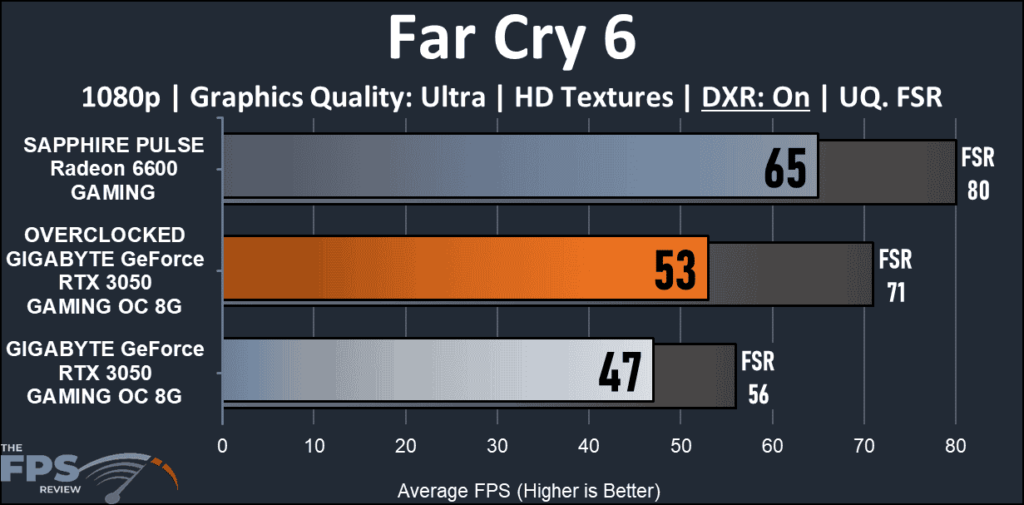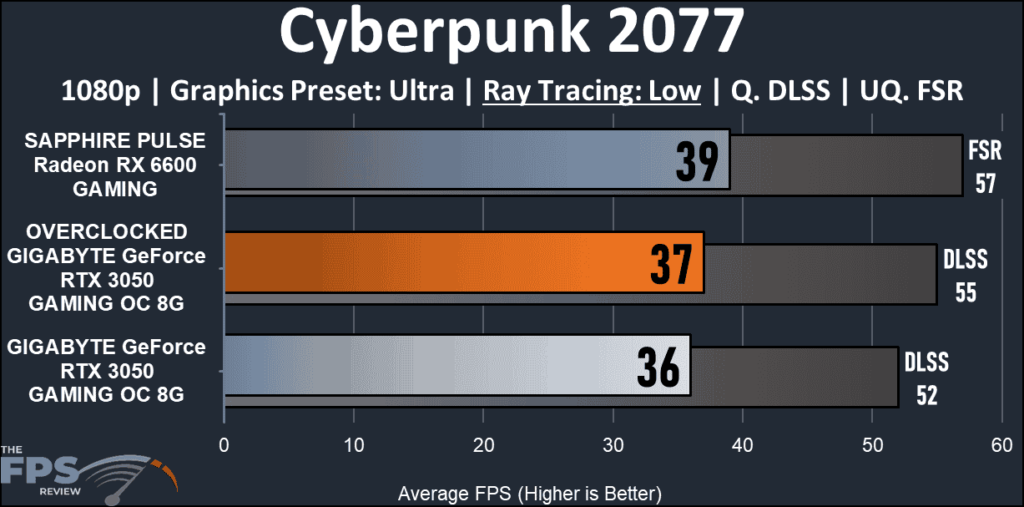Ray Tracing Performance
In each of the following games, we now enable the Ray Tracing settings. The resolution is 1080p and the settings are selected to give playable FPS in the same benchmarks or manual run-throughs as the previous section. DLSS and FSR are also included in the games that support them.
Dying Light 2

With Ray Tracing enabled at the “LOW Ray Tracing” setting there were areas of the manual run-through that were “choppy”, and the FPS was 31 and 34 overclocked. Adding DLSS to the mix increased the FPS to 52 and the game was remarkably smooth.
The Sapphire Pulse Radeon 6600 was slower in this game at 25 FPS and unplayable essentially. The addition of FSR didn’t help much, giving an FPS of 36.
Far Cry 6

This game supports Ray Tracing via two DXR settings, Reflections, and Shadows. These are enabled. FSR is also enabled for both our test cards.
In this game, the GIGABYTE GeForce RTX 3050 Gaming OC 8G has results that are at the lower end of playable with DXR enabled. Overclocking helped boost the performance by 6%. When FSR was enabled the FPS gained over 9% to 56. Overclocking in FSR seems to be the key in this game, the GIGABYTE 3050 gained nearly 20 FPS to 71 and was very playable.
The Sapphire Pulse 6600 was quite a bit better in this game with and without FSR as you can see.
Cyberpunk 2077

In this game, we are using the “LOW” Ray Tracing setting at 1080p and otherwise “Ultra” settings. This setting has only local shadows ray traced and is the least demanding of the Ray Tracing settings.
The GIGABYTE GeForce RTX 3050 Gaming OC 8G was performed at 36 FPS in this manual run-through. Overclocking had minimal change. The performance was minimally acceptable. The addition of DLSS did boost the FPS significantly and made a distinct difference. Overclocking added about 4%.
The Sapphire Radeon GPU had similar results as the RTX 3050 both with and without FSR enabled. That said, the 6600 was a touch faster.
Watch Dogs Legion

In Watch Dogs Legion we test the GPUs at the “MEDIUM” Ray Tracing setting. There is only DLSS available in this game, therefore we can only show the Radeon GPU using Ray Tracing. There may be a compatibility issue here as the benchmark was entirely unsatisfactory at 11 FPS. The GIGABYTE GeForce RTX 3050 Gaming OC 8G struggled in this game with the addition of Ray Tracing. Not even DLSS was overly helpful, but the benchmark was “less choppy” at 41 FPS. Overclocking was not overly helpful either
